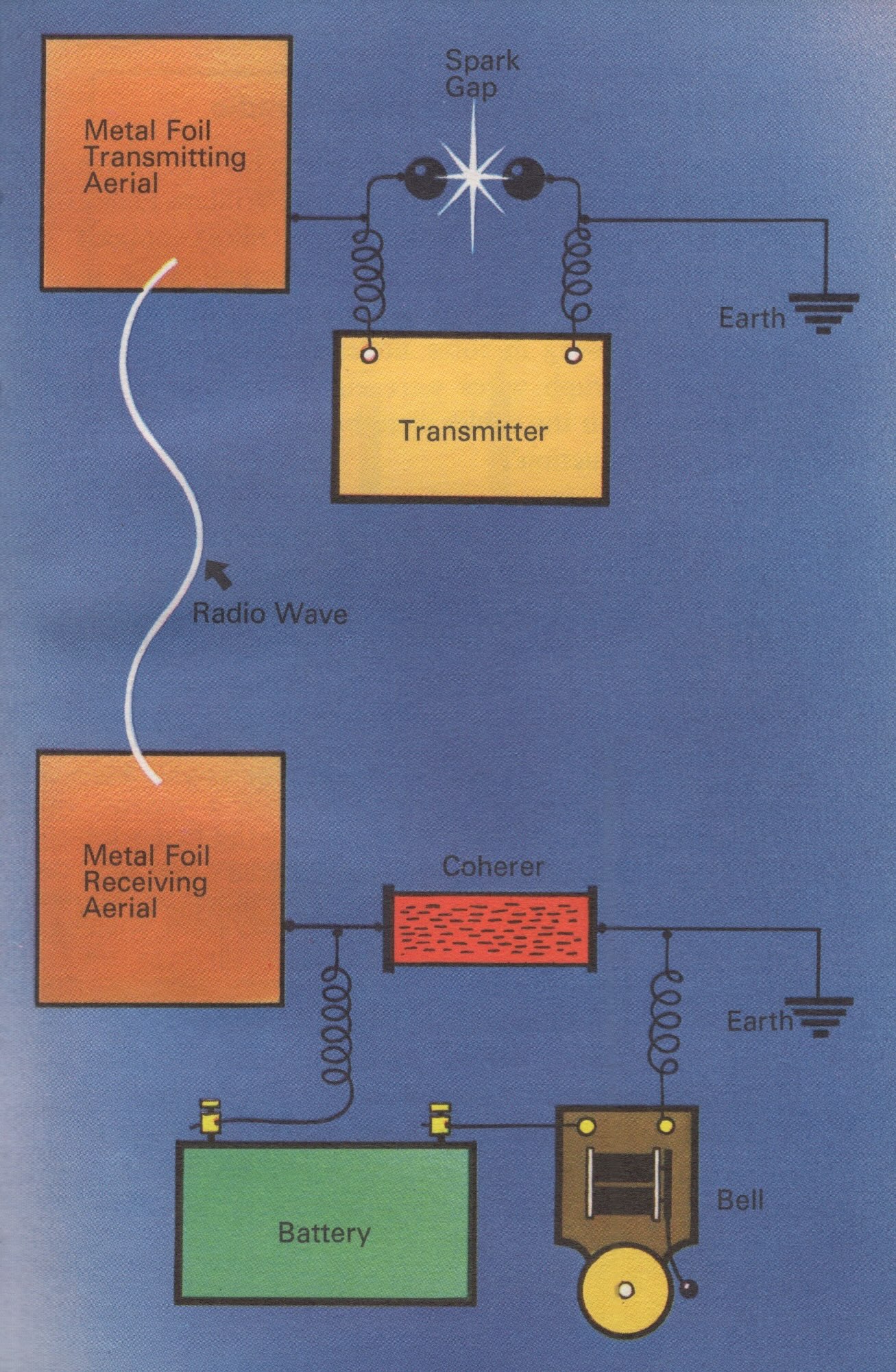
Illustration: Producing a readable message with radio waves
After Hertz sent radio waves across a room, nobody very much about it until, in 1894, Oliver Lodge (later Sir Oliver Lodge) transmitted radio waves a distance of 150 yards.
Hertz had seen that the radio waves created by the spark on his first Leyden jar had induced a spark across the spark-gap on the second Leyden jar, but the radio waves from an electric spark can only cause a click to be heard in headphones or through a loudspeaker. You hear this happen when someone switches off a light-switch near your radio. Sir Oliver Lodge realised that if radio waves were to produce a readable message, a further step had to be taken.
The next step was the invention of the 'coherer'. This was a small glass tube, loosely packed with iron filings which did not easily pass current from a battery connected to the tube. However, if an aerial having radio frequency currents flowing in it was connected to a coherer, then the iron filings 'cohered' or stuck more closely together and allowed the current: from the battery to flow easily through them, and so ring a bell. Therefore, each time the transmitting aerial material waves into the ether, and induced radio currents into a receiving aerial, , direct current passed from the battery through the coherer, and rang the bell.
By using a Morse Key at the transmitter, messages were sent out and made readable at the receiver by the coherer.
Material taken from: A Ladybird 'Achievements' Book, Publishers: Wills & Hepworth Ltd, Loughborough, First published 1968. Printed in England.
Read before: https://radiona.org/diary/what-is-wave-motion-0